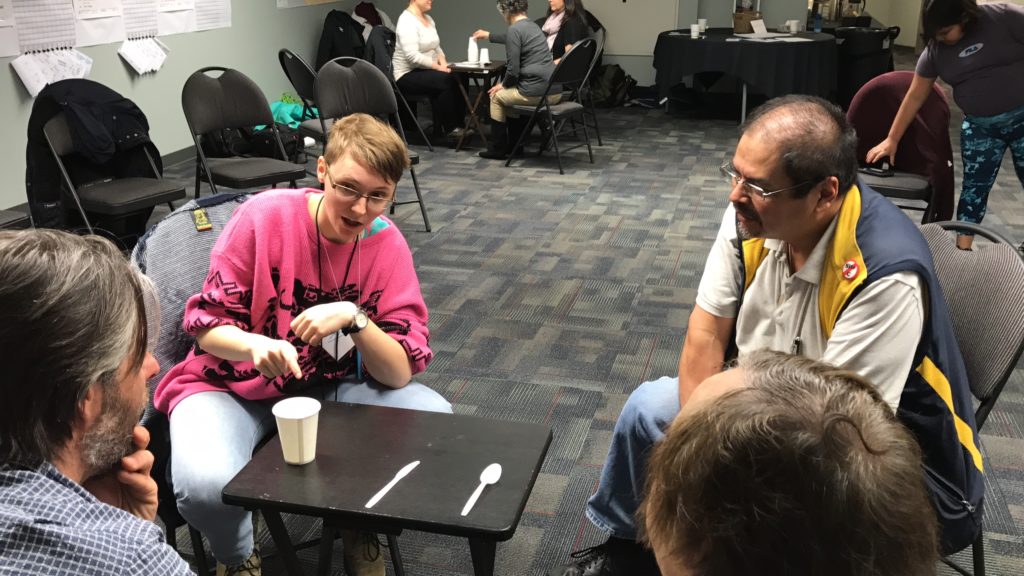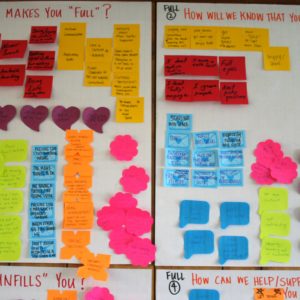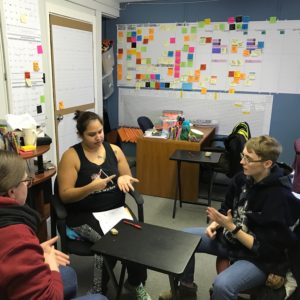
One of my favorite things about WAYK is its desire to stay in immersion for as many minutes as possible by avoiding translation (e.g. TQ: Spare the Fairies). However, there were a few fairies that I gladly squished. Working with speakers (and partial speakers) of Tagalog who didn’t know the Techniques, and lacking the fluency to talk around the concept to explain what I wanted in Tagalog, certain translations had to be made.
First and foremost was TQ: Later (mamaya). Working with a speaker (my partner) who was still in the process of waking up the language in his brain, there were certain things he just couldn’t remember, despite thinking hard about it for a few minutes. He uses mamaya far more often than I do in order to keep the conversation’s momentum moving forward and not get stuck up on not knowing something. Knowing that calling mamaya is an option (encouraged, actually) frees speakers from worrying about what they don’t know, and allows them to move past it and explore what they do know.
Second, I needed TQ: Limit (takdaan). I know enough Tagalog to express that I’m feeling overwhelmed in a certain conversation because of all the new words—however, I don’t know how to express what I want them to do about it. If I say that it’s too much for me, I can accidentally make them think I need to stop and revert back to English (TQ: Return to Superior)—when that just isn’t the case. Instead, I can use my handily translated sentence Takdaan tayo ang usapan natin, and we can move forward with a narrower focus.
Third, when I don’t catch something that my speaker says, I have just enough language to ask “Ano?” which is sort of like “huh?” But not enough to ask them to repeat exactly what they just said, or to slow down the pace they’re talking at. I’ve asked “Ano?” and gotten both results, plus the dreaded “I’m going use different words and expand on the idea in my previous sentence because I think you’re not understanding the concepts I’m talking about, rather than not understanding the words themselves.” Thus, muli (TQ: Again—Sinabi iyan muli) and mabagal (TQ: Slow Down—Magsalita ka na mabagal) are handy.
Though the ultimate goal is total immersion in the language, some phrases are honored martyrs on the path to fluency. The amount of time I would waste trying to Set Up the idea of TQ: Limit and TQ: Slow Down would likely confuse my speakers and set me back at least a day or two—time better spent making adobo in Tagalog.
Post authored by Kay.




